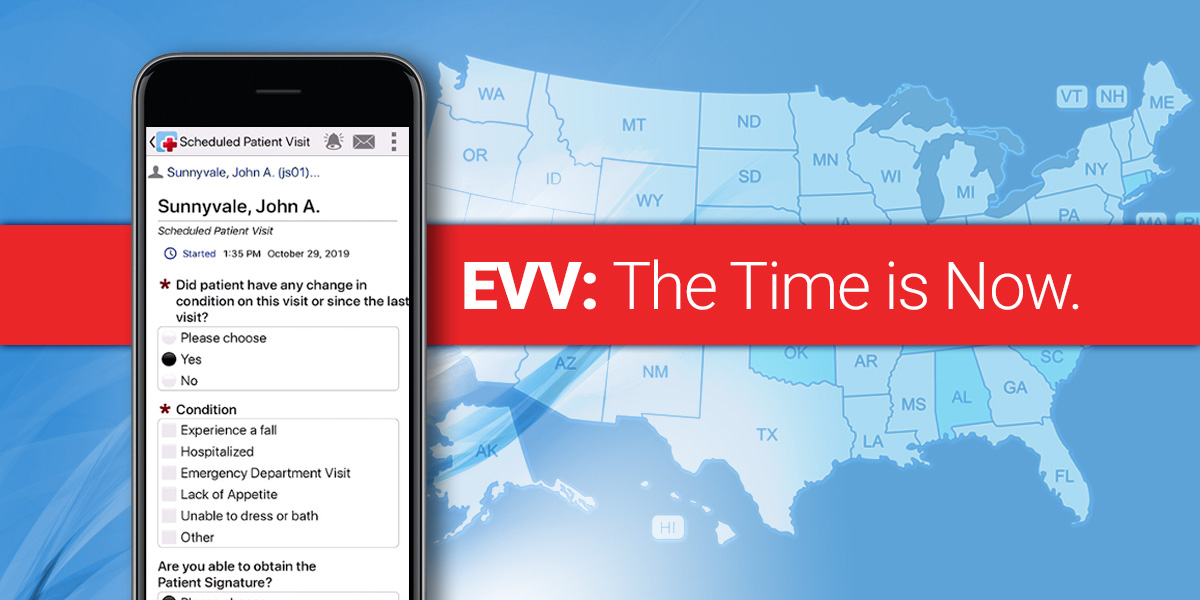EVV: The Time is Now
The implementation of Electronic Visit Verification (EVV) is building momentum across the US. Many providers have responded to the push and made substantial progress to meet the mandate. There are others who might feel like a few months is a long way out and they still have time to think about EVV- rather than act. If you are in the second category, you are not alone, but please keep reading.
I have worked with a number of providers in the majority of states, and the best advice I can give is to start early. You can make progress even if your state has not yet given detailed EVV implementation guidance. I’ll step you through some EVV fundamentals and share a few best practices to help you move forward.
Providers have two responsibilities relative to EVV compliance – to collect visit information at the point of care, and to relay that data to the payor that requires it.
Responsibility number one is to collect compliant visit information, and agencies must choose an EVV solution that makes documenting the service at the point of care easy for the caregiver. Many find that a mobile application is the most efficient tool to support this process. While some states do offer a free tool for data collection that achieves basic check-the-box compliance, many agencies can benefit from an EVV solution that will support a higher level of care and drive efficiency across agency operations.
The second responsibility of agencies is to relay that visit information to the payor in the right format, in near real time. Each payor and each state have unique requirements both in terms of the data they wish to receive and the format they receive it in. So, providers that operate in multiple states or submit claims to more than one payor would benefit from considering an EVV solution that works for all payors and all visits, versus trying to train caregivers on multiple systems or support several administrative workflows.
Most states are marching towards a January 1, 2021 deadline. The majority of them have not implemented claims denial yet- but don’t wait on EVV until a deadline for claims denial is looming. States are overwhelmingly adopting a soft launch process, meaning that agencies are required to submit EVV data to the aggregator, but missing or incorrect data does not result in any claims denial. Providers who plan correctly can optimize their use of this “grace period” to make their EVV implementation run more smoothly- and minimize the risk of claims denial.
Although Electronic Visit Verification is mandated, at the core it is an opportunity to ensure that care is provided at the highest level possible by putting critical information in the hands of the caregivers in the field each day. It supports agency operations by providing a vehicle for oversight and care coordination. Especially in this difficult time, EVV is a critical piece of the solution for care delivery.
Whether your state has given detailed guidance or is still developing an approach for EVV, providers can start collecting EVV compliant data now. Beginning EVV implementation will allow you to realize the benefits of EVV right away and be prepared when the state provides more detail around requirements. Start now, embrace the change, and you will be glad you did.


